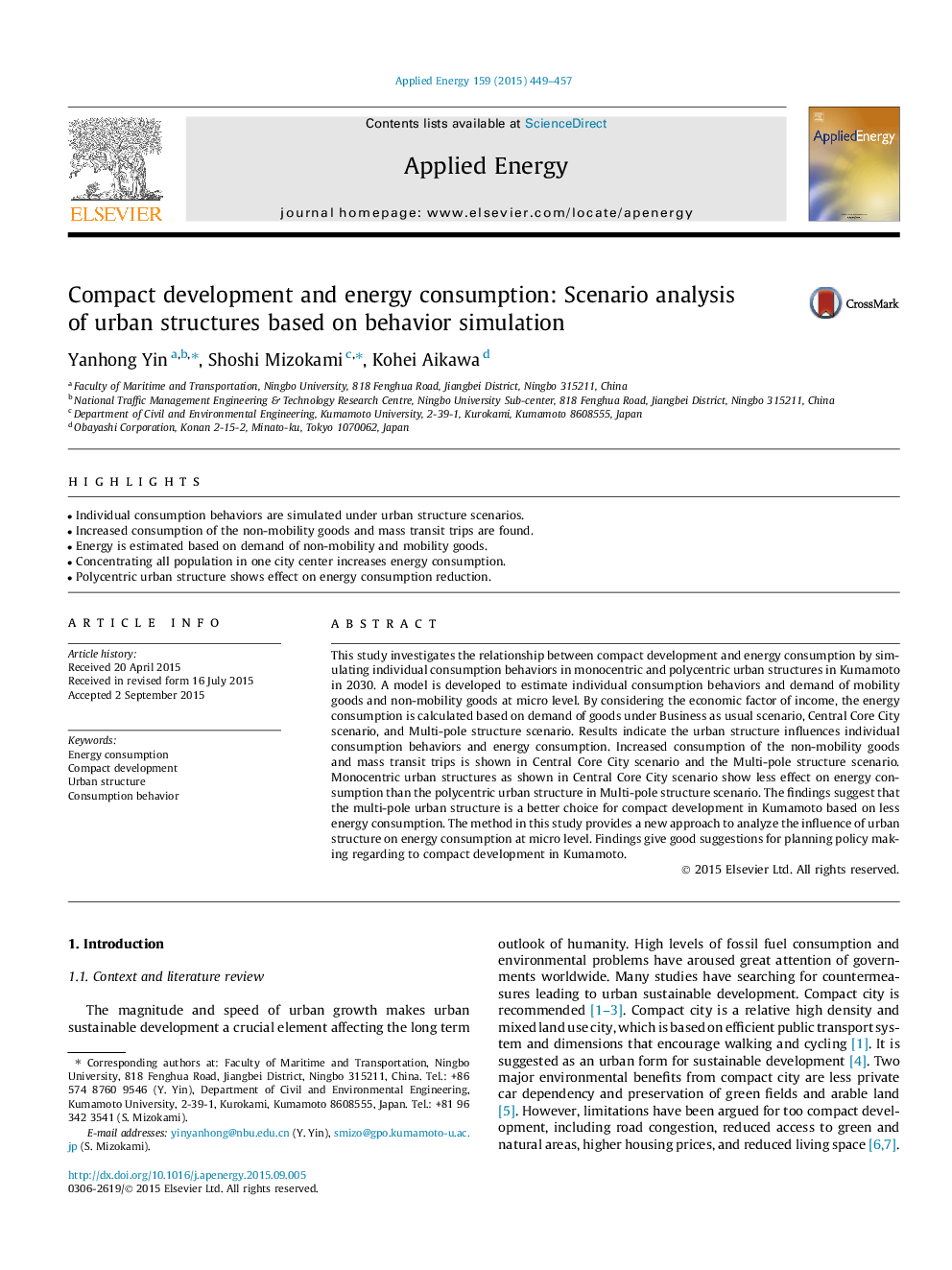| Article ID | Journal | Published Year | Pages | File Type |
|---|---|---|---|---|
| 6685618 | Applied Energy | 2015 | 9 Pages |
Abstract
This study investigates the relationship between compact development and energy consumption by simulating individual consumption behaviors in monocentric and polycentric urban structures in Kumamoto in 2030. A model is developed to estimate individual consumption behaviors and demand of mobility goods and non-mobility goods at micro level. By considering the economic factor of income, the energy consumption is calculated based on demand of goods under Business as usual scenario, Central Core City scenario, and Multi-pole structure scenario. Results indicate the urban structure influences individual consumption behaviors and energy consumption. Increased consumption of the non-mobility goods and mass transit trips is shown in Central Core City scenario and the Multi-pole structure scenario. Monocentric urban structures as shown in Central Core City scenario show less effect on energy consumption than the polycentric urban structure in Multi-pole structure scenario. The findings suggest that the multi-pole urban structure is a better choice for compact development in Kumamoto based on less energy consumption. The method in this study provides a new approach to analyze the influence of urban structure on energy consumption at micro level. Findings give good suggestions for planning policy making regarding to compact development in Kumamoto.
Related Topics
Physical Sciences and Engineering
Energy
Energy Engineering and Power Technology
Authors
Yanhong Yin, Shoshi Mizokami, Kohei Aikawa,
